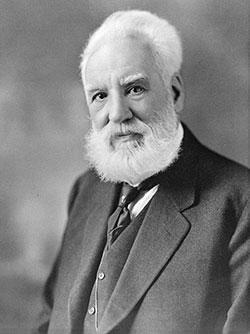The Gecko Grip
In warm climates of the globe, you will find a small creature that has amazed and bewildered human observers for thousands of years. “Gecko” is the name of a family of lizards known for possessing many unique features. For example, it uses its tongue to clean and moisten its eyes since it cannot blink, and is recognized by its frequent and sometimes annoying chirping.
Yet, by far, virtually all observers agree that its most amazing characteristic is its ability to walk effortlessly on vertical or even overhead surfaces, despite the fact that its feet are not sticky nor do they possess any form of suction cups. For centuries man has been unable to explain this behavior. Twenty-three hundred years ago, the Greek philosopher Aristotle commented on the capacity of a gecko to “run up and down a tree in any way, even with the head downwards” (The History of Animals, Book IX, Part 9, trans. D’Arcy Wentworth Thompson).
In our day the secret of the gecko’s ability is beginning to be understood, and this comprehension is spawning new advances in adhesion technology, even creating new adhesive applications in the space program.
Doing the Impossible
If you have ever had the opportunity to observe a gecko, you will have noted that it can move very quickly, even on vertical surfaces. Travelling up a vertical plane requires the one moving to create a force greater than the weight of the body being moved, and there must be sufficient friction or adhesion to the surface to allow the application of that force. Consider also that a gecko can move at a rate of 20 body lengths per second, whether on a vertical surface or even on the ceiling above your head! The gecko’s foot must somehow adhere to the surface, and yet be released just as quickly as it initially stuck to that surface. As noted by the Oxford Journals: “…repeated and rapid detachment without significant detachment forces is beyond the capability of any current synthetic adhesive” (“Mechanisms of Adhesion in Geckos,” Oxford Journals, Volume 42, Issue 6, p. 1082).
A mechanism that a simple lizard applies daily and without thought or effort continues to remain beyond mankind’s ability to duplicate! So how does the gecko do it?
It appears the secret of gecko movement is in the foot design. The five toes on each gecko foot are covered with several rows of microscopic bundles of “hairs” called setae. Each of these bundles can split into hundreds of extremely tiny endings called spatulae. Scientists have learned that the length and design of these hair-like structures enables each of them to create an electrostatic force (known as van der Waals force) which develops as soon as the toes touch a surface. The toe immediately develops a positive charge, and since the surface has an equal and opposite negative charge, the resulting electrostatic force of attraction allows the gecko to be secure on almost any surface.
A gecko weighs approximately 50 grams (2 ounces), yet the average gecko would require up to 130 kilograms (286 pounds) of force to be dislodged if fully attached with all four feet (David Robson, “Gecko’s gravity-defying trick explained,” New Scientist Live, June 2007). This explains why some people have seen a gecko clinging to a ceiling quite safely using a single toe. A 50-gram gecko has about 6.5 million spatulae. One million setae could fit on a dime and easily support the weight of a child (St. Fleur, “How Do Geckos’ Feet Work?” Huffington Post, August 10, 2012).
But why does the gecko not become stuck in one place, given that the force developed is so strong? How is it able to lift its feet if they are sticking to the surface so powerfully?
The spatulae do not project from the feet at a right angle, but are designed to touch the surface at an angle. When that angle is 30 degrees, the force appears to be at a maximum. But as the gecko moves the foot forward, the angle increases and the force rapidly grows weaker, allowing for quick movement.
Oregon State University assistant professor of mechanical engineering, P. Alex Greaney, puts it this way: “These are really fascinating nanoscale systems and forces at work… It’s based not just on the nature of the seta, but the canted angles and flexibility they have, and ability to work under a wide range of loading conditions” (Rachel Feltman, “New Research Investigates the Physics of Sticky Gecko Feet,” Washington Post, August 12, 2014).
Kellar Autumn, a biologist at Lewis and Clarke College in Oregon, in observing this phenomenon stated: “Geckos are vastly over-engineered” (Robson). This is due to the fact that a 50-gram gecko needs to use only 3 percent of its setae to be secure as it climbs—allowing it to hang by a single toe! It only runs into problems if the surface becomes wet, which significantly reduces the effectiveness of this fascinating, gecko-gripping technology.
Inspiring New Technology
Overall, the efficiency of this system of adhesion is far superior to anything man has been able to design. Thus British Aerospace, NASA and many other research labs are now working to perfect synthetic “gecko grippers.” NASA has already tested prototypes using carbon nanotubes, which they hope to be able to use to enable robotic spacecraft to grab space debris. Others are looking at using them for high-end braking systems, as well as effective stick-and-release mechanisms for any number of very large and very small applications where traditional adhesive systems have limitations. One research project is looking at using the carbon nanotube adhesive as a replacement for solder in electrical systems, while others are studying this gecko technology to gently seal wounds without stitches.
Thus equipped, these superheroes of the lizard world more than rival the fictional “Spider-Man” of Marvel Comics! Geckos are real creatures, whose technical ability modern science now seeks to replicate in order to improve its ability to operate on the earth and in space.
Because of our very rapid pace of life, most of us seldom take the time to stop and consider the many remarkable and intricate aspects of the organisms that make up our world. Sometimes we notice the big things, but often ignore the subtle or minute. Yet in some of these small but fantastically complex life forms are reminders of the obvious engineering that has been built into the fabric of life.
We have more opportunity than ever, in this age, to learn about and appreciate the genius that is so clearly evident in designing even the gecko, aspects of which modern science seeks to copy today to better address the challenges of tomorrow. The Genius behind the gecko grip, the brilliant Engineer and Creator of both the astronomical and the microscopic, is praised eloquently in the biblical book of Psalms: “O Lord, how manifold are Your works! In wisdom You have made them all. The earth is full of Your possessions” (Psalm 104:24).






